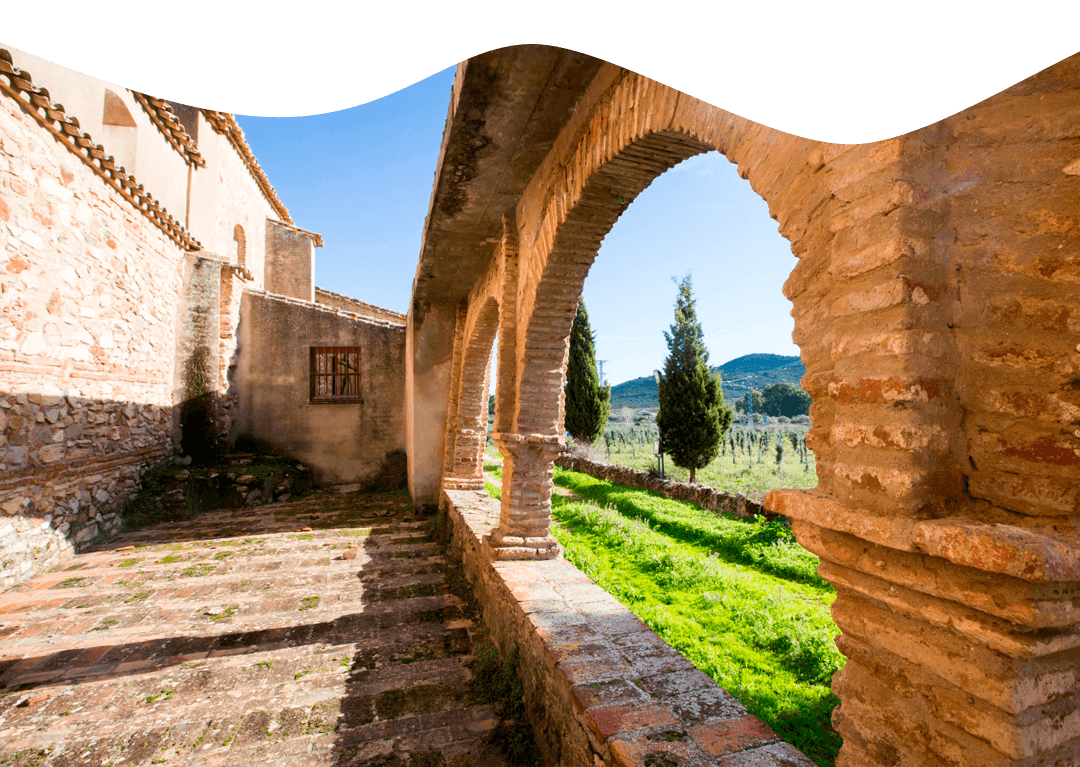Hermandad of Guaditoca
NAME OF THE BROTHERHOOD: Real e Ilustre Hermandad de Nuestra Señora de Guaditoca, Excelsa Patrona y Alcaldesa Perpetua de la Villa de Guadalcanal.
Relevant data
In a brief description, we can say that the devotion to Our Lady of Guaditoca dates back to the XIII century (“El Santuario de Ntra.) There is little information about this, except what is described by the author of this book, but the story of the Apparition of the Blessed Virgin in the waters of the Arroyo de Guaditoca, located in the Vega del Encinal, to a shepherd whose name is unknown. In the minutes of councils that are referred to in the aforementioned book, there are details relevant to the piety of the people of Guadalcanal and neighboring towns to the Blessed Virgin, dated between 1200 and 1300 AD. Traditionally, both the Virgin and the Bellotero Child have enjoyed a wide devotion in Guadalcanal and the neighboring towns, of which there were numerous filial brotherhoods, which annually went to the Sanctuary on the date of the celebration of Pentecost, where a livestock fair took place in the surroundings of the Hermitage. On the third day of the fair, the procession of the Virgin was celebrated around the Sanctuary, blessing the stalls and fair-goers who attended.
The primitive Sanctuary was located on the banks of the stream, a few meters away from the one that is preserved today, which is the work of the seventeenth century. In the year 1637 the first coming of Our Lady of
Our Lady of Guaditoca came to the town of Guadalcanal in 1637, in a prayer for rains; from this coming is extracted the model and form that is preserved today annually when the Blessed Virgin comes to the town: the Image is carried on the shoulders of her faithful children, staying overnight in the Church of the Convent of the Holy Spirit, descending to the Parish of Santa Maria de la Asuncion the next day in procession, and celebrating a novena in her honor, after which, the Blessed Virgin returns to her Sanctuary. The Sanctuary has a vault artistically very valuable for the frescoes that conform it in its totality, work of Juan de Brieva. In 1586 it was governed by its first patron, Alonso Carranco Ortega, and for almost 3 centuries, the patrons governed the designs of the Brotherhood, a model totally different from how we know it today.
In 1792, after some turbulent negotiations between the different Town Councils and Councils, it was decided to move the livestock fair to the town of Guadalcanal, which began the tradition of the Virgin coming to the village annually for the celebration of the fair. Initially held in the Plaza de España, moving to the Real del Coso in the twentieth century. It remains indelible in time the tradition of the annual procession of the Blessed Virgin on the third day of the fair, being currently the biggest holiday of our people.
There is no known information about the foundation of the Brotherhood, but there is information about its reorganization in 1863. Once the Corporation was reorganized, Queen Isabella II of Spain played a special role, giving it the title of Royal (the date on which this occurred is unknown). The Sacred Image of the Virgin retains a brooch and earrings owned by such a royal lady, who wears them annually during her stay in Guadalcanal. The primitive image, of unknown author, carried in arms the Child Bellotero, being torn from it in acts of vandalism. The Sacred Image was destroyed in the events of the Civil War of 1936, when it was found in Guadalcanal. The altarpiece of the Sanctuary was conserved, a magnificent piece of the XVIII century, of unknown author, that is conserved at the present time and has been recently restored by the restorer Jorge Anillo. In these events of 1936 the Sanctuary of our Patron Saint did not suffer any damage. The present image of Our Lady is the work of the sculptor Antonio Illanes, from 1937, a replica of the previous one. It preserves an extensive trousseau of skirts and mantles of the primitive image, which have been used up to the present day. It has several crowns of gold work, being the most outstanding the two pieces of gold-plated sterling silver, one of which is the work of Seco Velasco from 1919, and the other of Villarreal from 1996. Her attributes are complemented by several sets of scepters and crescent moons in silver and gold. It should be noted that the Blessed Virgin wears Shepherdess finery during her annual pilgrimage, as well as during part of the time that the Sacred Image remains in the Sanctuary.
In the recent history of the Brotherhood, we can highlight the two extraordinary visits of the Blessed Virgin to the town: in 2000 for the Jubilee Year decreed by the Vatican in the second millennium of the birth of Christ, and in 2012 on the 375th anniversary of her first visit to the town. Also noteworthy is the awarding of the first gold medal of the Villa de Guadalcanal to the Blessed Virgin in 2001, and the awarding of the title of Perpetual Mayoress of the Villa in 2017.
Translated with www.DeepL.com/Translator (free version)


